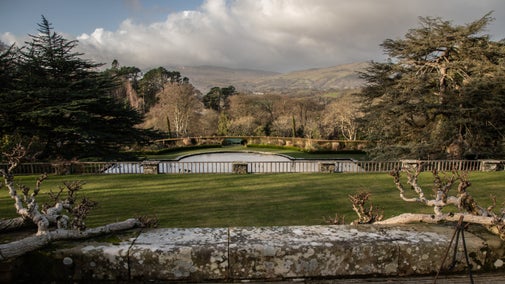
Discover more at Oxburgh Estate
Find out when Oxburgh is open, how to get here, things to see and do and more.
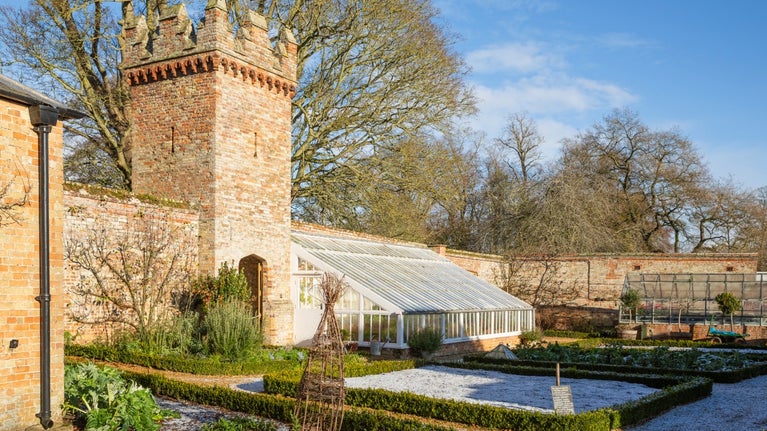
Wander around the Kitchen Garden and discover what’s growing this season as well as what's in bloom in the newly restored Peach House Border. Enjoy the tranquillity of The Orchard and the Herbaceous Border overlooking the Hall or venture further afield to explore the less formal areas of The Wilderness and My Lady’s Wood.
The original garden at Oxburgh, created by the 6th Baronet during the Victorian period, has long since disappeared but what you see today reflects that design and pays homage to Oxburghs colourful past.
This kitchen garden would have originally supplied the family. Today you'll find a variety of fruit, vegetables and salad crops . Many of the fruit and vegetables are grown from seed and are heritage varieties including skirret, a forgotten Tudor root vegetable that was often used akin to spring onions in salads. There is also a cut flower garden filled with Dahlias and Alstroemeria.
In a corner of the garden, you’ll find the glasshouse which was rebuilt by a team of volunteers in 2010 to reflect an earler Victorian version. This is now where we care for many of the garden’s young plants until they are ready to be planted out. We use the rainwater from the roof to water the beds and an energy-saving air-source heat pump to heat the building.
The kitchen garden also has a potting shed which now hosts our second-hand bookshop.
Look out for the bell in the tower, but be warned as the old poem next to it reads, ‘if you ring this bell, the gardeners will come; should you ring in jest, then we hope you can run.’
Back in the 19th Century on the other side of the Kitchen Garden there once stood a grand glass Peach House which was home to a variety of fruits that were grown along the warm south facing wall. After its demoloition in the 1970's the space became an ornamental border but lost definition and purpose over time and struggled with our changing climate.
In early 2025, the Peach House Border underwent a full restoration and was redesigned with a new brief; to be sustainable, productive, and serve as a nod to its semi-tropical past.
Today the Peach House Border brims with resilient, edible, and exotic-looking plants — a vibrant reminder of Oxburgh’s past and future.
Within the orchard you’ll find fruit trees from around East Anglia, including heritage varieties from Norfolk. With the exception of a couple of older medlar and quince trees, the apple and pear trees are a relatively recent addition supporting our ambitions to re-establish the orchard that once grew here.
The grass here is managed as a wildflower meadow and cut using the traditional method of scything – it’s at its best in June and July.
The Parterre, known by the family as the French Garden, was created for the 6th Baronet in 1848 following a trip to Europe. Traces of coal and cement suggest it was originally coloured with minerals as well as flowers, before being planted with potatoes during the Second World War to help with the war effort.
Every thirty or forty years, the Parterre needs a major refresh and replanting to keep it looking good. The Parterre was last completely refurbished in 1972, with smaller refreshes occurring since then. With the effects of climate change and the damaging effects of disease on the Parterre’s hedging, the time has come to carry out another major restoration of this wonderful garden feature.
An archaeological dig took place in April 2023 and in the summer of 2024, a topographical survey was carried out to help us accurately recreate the 19th century French design..
Items discovered during the 2023 dig include pottery shards which date back 200 years or more and civil war pistol shot balls from before Oxburgh Hall was built as well as the sill plate of an original house on the estate.
Staff and volunteers will be excavating paths and relaying them with a new substrate and surface through autumn and winter 2025/6.
We expect the whole project to be completed before Spring 2027.
This long bed is planted in repeating patterns. A high hedge originally ran alongside the grass path and there were doors at either end. If the family story is true, it was used as a secret garden by Lady Augusta Bedingfeld, who could enjoy the colourful border unseen whilst pregnant (which happened 11 times).
This border is currently seeing ongoing restoration works which include a new archway in the hedge, creating a window with a view across the Parterre to the hall.

The Wilderness was created in deliberate contrast to the more formal gardens that immediately surrounded country houses. Just like other areas of the garden, this was also the vision of the 6th Baronet.
Here he used scented shrubs, evergreen planting and mature lime trees to help create a romantic illusion of an untamed landscape. Purposely designed not to be overlooked from the house, instead managed views create natural windows out across the parkland.
Similar to the Wilderness in its design, the 6th Baronet diverted part of the River Gadder through this area of woodland, which he named after his wife, Margaret.
The Victorians enjoyed hearing the sound of flowing water and so he built a summerhouse next to a flowing cascade, as a place to pause and listen. From here you can enjoy great views back towards the hall.
Silent Space is a not-for-profit initiative that creates opportunities for silent reflection in numerous green spaces in the UK.
They provide a reserved area for people to switch off from technology and to enjoy a moment of silence in the company of nature.
You can find Oxburgh’s Silent Space tucked away at the far end of the inviting Wilderness lime walk. A welcoming space for visitors to settle on a bench and tune into the birdsong, or just take a moment to relax, switch off and be present.
For more information, visit the Silent Space website.

Find out when Oxburgh is open, how to get here, things to see and do and more.
Whether you're building a den, becoming a nature explorer or searching for secret doorways, Oxburgh has plenty to keep the whole family entertained.
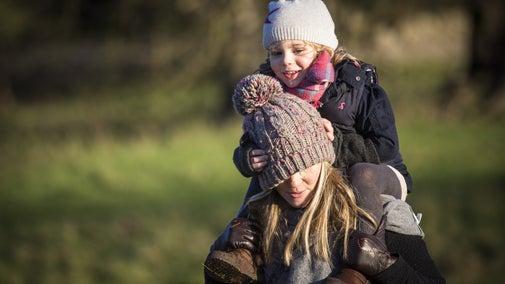
Oxburgh Estate is a two pawprint rated place. To help everyone have a fantastic time when you visit with your dog, we ask that you follow this guidance.

Oxburgh has been home to the Bedingfelds for more than 500 years, and they still live within private apartments at Oxburgh today. Discover what you might see on your visit.
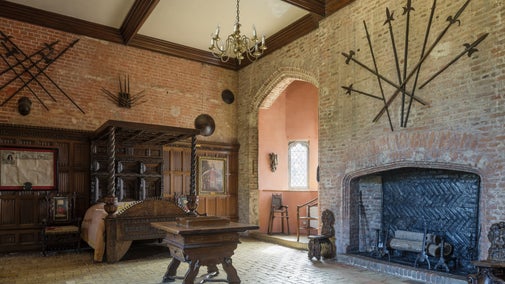
Oxburgh Estate is nestled on the edge of the Norfolk Brecks, where the land meets the wide-open Fenlands. Discover the wider parkland, and the wildlife that makes their home here.
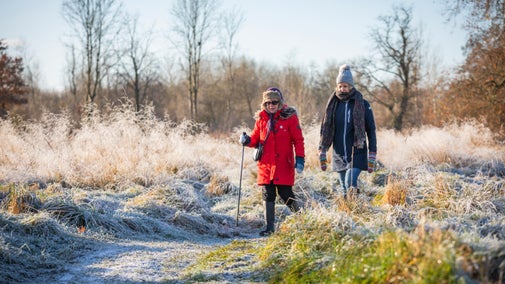
Enjoy something to eat and drink in the Servants' Hall tea-room or the Pantry café during your visit. You'll also find our Courtyard Giftshop and the Potting Shed second-hand bookshop.

Discover our gardeners’ top tips so you can make the most of your garden, plot or window box.
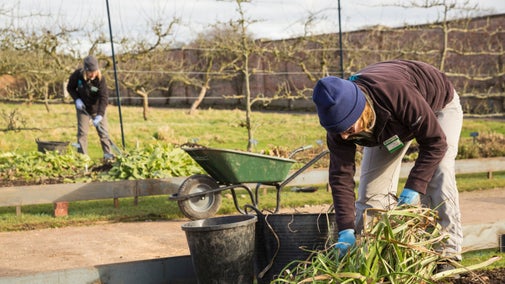
In Norfolk, there are gardens showcasing the best of this season's plants and blooms. From kitchen gardens to glasshouses and parterres, find some inspiration for your own green space.
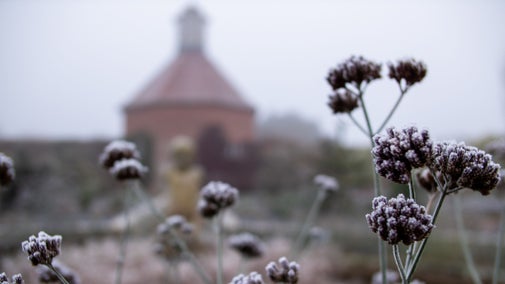
From 18th-century water gardens and Arts and Crafts landscapes to intimate woodland gardens, there are so many places to discover.
